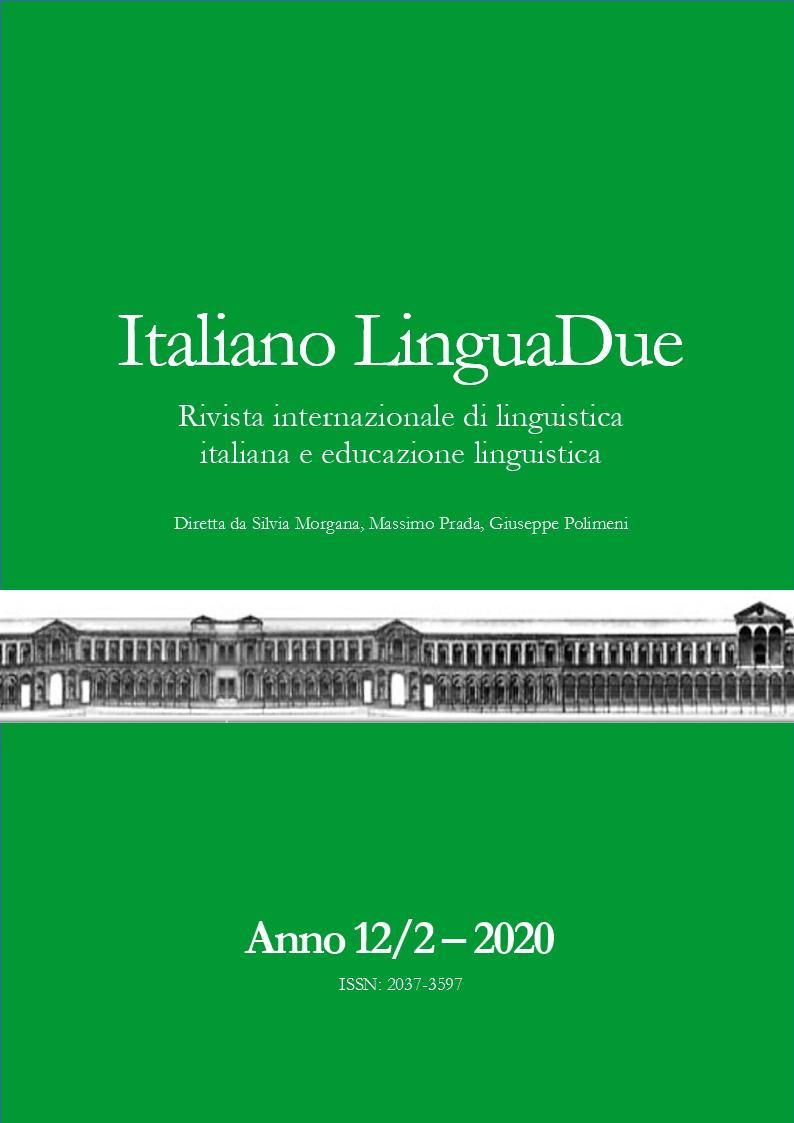DIFFORMITÀ SINTATTICHE FRA ITALIANO E TEDESCO: TRADURRE L’ESPRESSIVITÀ DELL’AGGETTIVO ITALIANO PREPOSTO IN LINGUA TEDESCA
Uno studio contrastivo applicato all’analisi delle Cosmicomiche di Italo Calvino e della sua traduzione di Burkhart Kroeber
DOI:
https://doi.org/10.13130/2037-3597/15104Abstract
Sulla base dell’analisi di un corpus contrastivo di 28 racconti tratti delle Cosmicomiche di Italo Calvino e della sua traduzione di Burkhart Kroeber il presente studio mette in luce la differenza sintattica fra l’italiano e il tedesco circa la posizione dell’aggettivo attributivo.
Giacché in italiano quest’ultimo può essere preposto o posposto al sostantivo, mentre in tedesco esso è sempre preposto, ci si propone in questo lavoro di indagare le diverse possibili strategie traduttive del tedesco nella resa dell’espressività dell’aggettivo italiano, che assume un valore enfatico se preposto. Il presente studio propone una categorizzazione delle varie soluzioni traduttive di Kroeber supportata da un’analisi quantitativa e qualitativa. Una riflessione critico-teorica circa la tassonomia proposta indica la prospettiva pragmatica come la chiave interpretativa più adeguata per interpretare i diversi livelli linguistici – intonativo, morfologico, sintattico e semantico – sui quali si articolano le diverse scelte traduttive.
The syntactic difference between Italian and German: translating the expressivity given by the position of the Italian adjective
Based on the analysis of a contrastive corpus of 28 stories in Italo Calvino’s Cosmicomiche and the German translation by Burkhart Kroeber, this study focuses on the syntactic differences between Italian and German regarding the position of the attributive adjective.
Given that in Italian the adjective can be put before or after the noun while into German it must be always placed before, this paper aims at investigating the different possible translation strategies in German which might reproduce the expressivity given by the position of the Italian adjective that takes on an emphatic function when placed before the noun. This paper proposes a categorization of Kroeber’s numerous translation solutions, supported by a qualitative and quantitative analysis. Theoretically and critically reflecting on the proposed taxonomy indicates the pragmatic perspective is the most appropriate in order to interpret the various linguistics levels – intonational, morphological, syntactic, semantic – on which the various translation solutions are structured.




